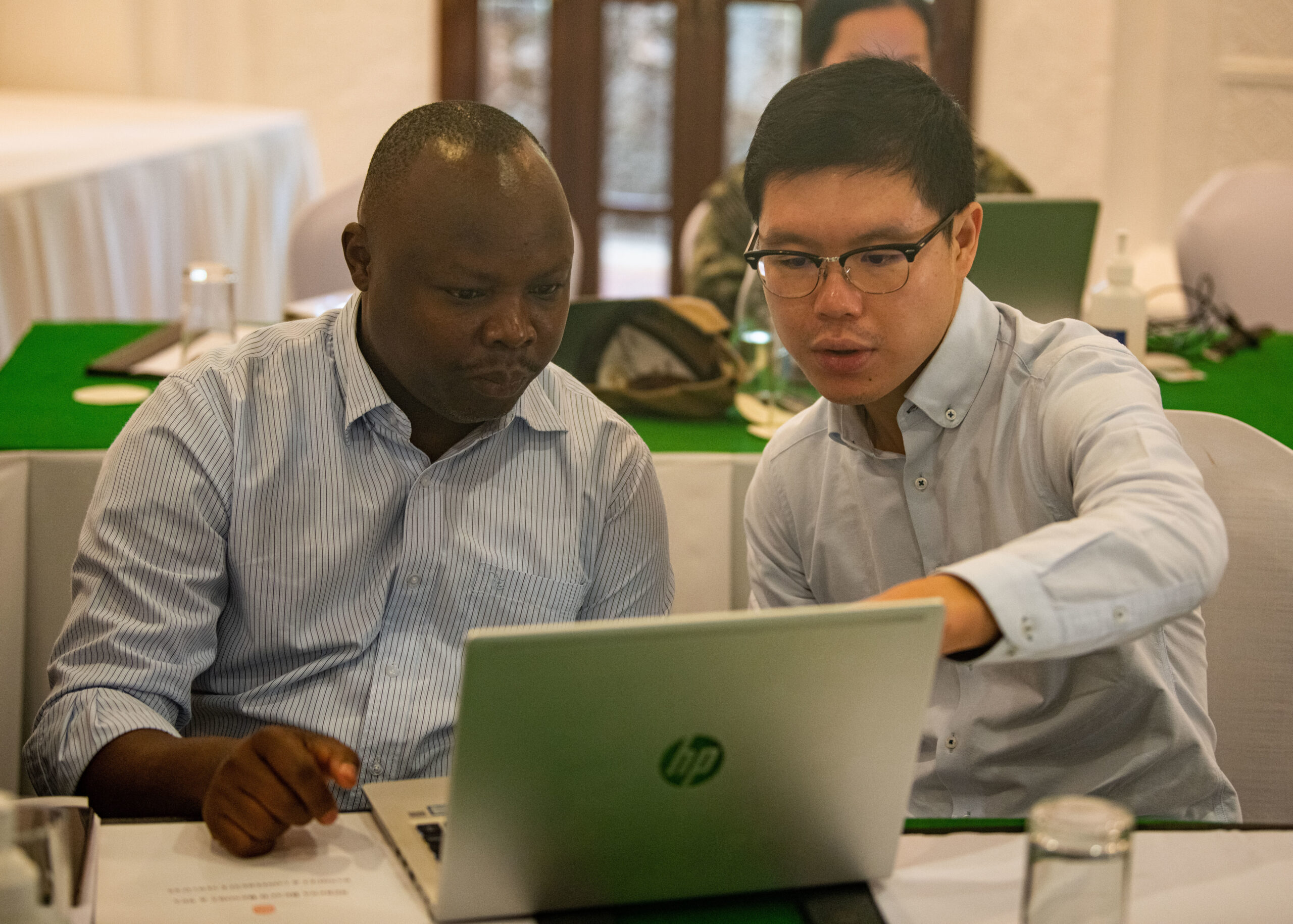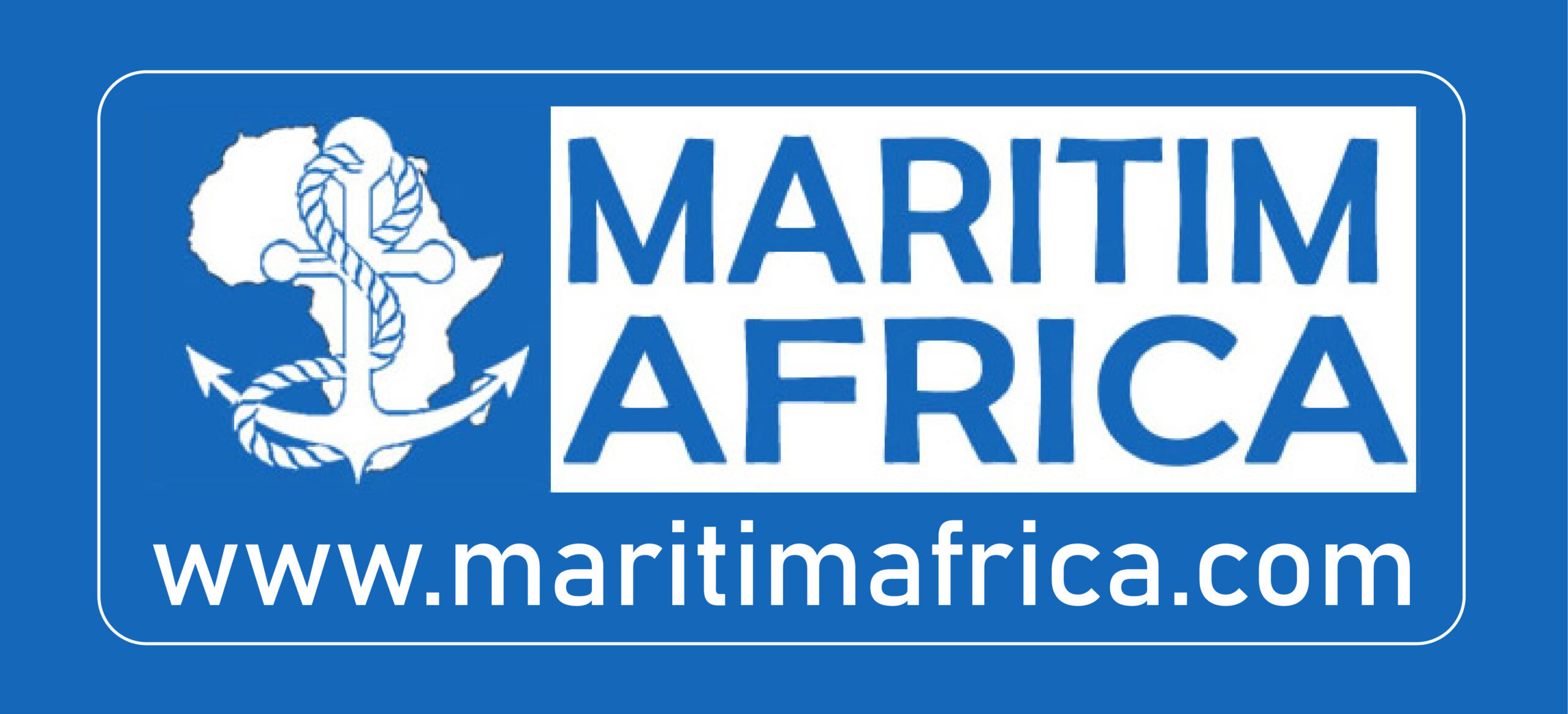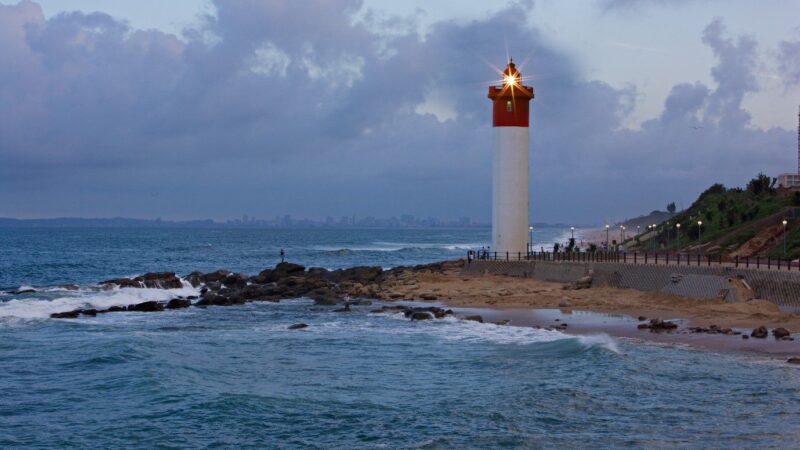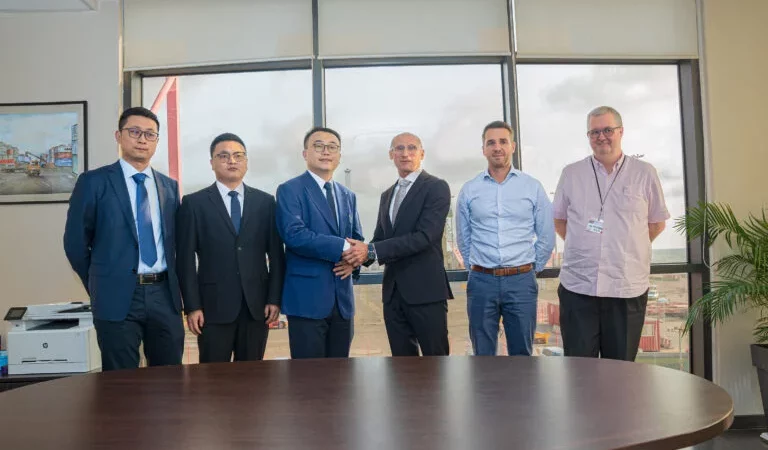U.S. DOT and NIWC-PAC host SeaVision training for exercise Cutlass Express 2023 participants

In concert with the Naval Information Warfare Center, Pacific (NIWC-PAC), the U.S. Department of Transportation (DOT) hosted SeaVision training for exercise Cutlass Express 2023 (CE23) participants, in Mombasa, Kenya, March 8, 2023.
Two trainers, Mario C. Caputo, a Situational Awareness and Logistics Division engineer for the DOT, and Alvin Yu, a SeaVision technician and trainer for NIWC-PAC, hosted a two-day crash course on SeaVision to CE23 participants, bringing partners up-to-speed on the latest updates and new tools available, as well as how to enable the web-based program and utilize different areas of the software to sort and sift through various types of analytical data. Additionally, the trainers discussed and illustrated how SeaVision would be used as a visual, Common Operating Picture (COP) for exercise Cutlass Express 2023. Utilizing SeaVision, exercise members will track participating ships during next-week’s execution phase of the exercise and communicate their analysis to other participants through SeaVision’s communication tools.
“So far, we have a good audience for our training,” said Yu. “We specifically requested those who are already operating at their national Maritime Operations Center and have some familiarity with the program from daily use. We’ve seen the team this year fully able to use the tools, understand the data, and have discussions about the maritime challenges they’ve encountered in the region. Then, we try to use SeaVision to tackle some of those challenges.”
SeaVision is the U.S. Navy’s unclassified maritime domain awareness tool. Developed by the DOT, and later co-developed by NIWC-PAC, the program uses both commercial and national AIS data to develop broad-spectrum and situational awareness of the maritime domain. In practice, partner nations use the program to receive a comprehensive picture of what is happening in their exclusive economic zone and can further use the program to assess maritime information gathered in the waters of other nations that opt-into and utilize the SeaVision program.
To gather this information, SeaVision utilizes a couple different avenues of information collection. The primary inputs are from nations participating in the SeaVision program. Additional inputs come from commercial, governmental, and military organizations, which help build a better picture. Some countries, such as Mauritius and Kenya, utilize coastal AIS sensors to build a picture of vessels currently in their territorial waters and exclusive economic zones. For example, when both nations join the SeaVision program, Mauritius receives all of Kenya’s national AIS data, and vice-versa. What this means, in practice, is that Kenya can track a suspect vessel as it departs Port Louis, Mauritius, and, if the nations along its route are SeaVision partners, all the way up until it moors in Mombasa, Kenya.
This is the Common Operating Picture (COP) of SeaVision – a visual map that breaks down a diverse range of analytical data. For example, a SeaVision operator can observe a ship’s movement, the ship’s track, up-to-date positions of the ship’s transmission on AIS, if and when it changes its name, and if any of the public data has either changed or does not match previously submitted data. Additionally, SeaVision has non-AIS data sources to assist partners in tracking non-AIS emitting vessels.
“Our goal is to show our partners what kind of level-of-capability they can achieve, with SeaVision as a baseline,” Yu said. “We’re achieving great interoperability with our African partners. We use SeaVision during Cutlass Express 2023 to demonstrate new capabilities, and how those capabilities can tackle important maritime challenges we face in the region – specifically illegal, unreported, and unregulated fishing, smuggling and trafficking of goods. Additionally, we dive into the analytical data so that when we look at the COP, we can distinguish between normal and abnormal behavior, potentially for further investigation.”
U.S. Naval Forces Africa funds SeaVision access for African partner nations to use throughout the year, as part of a capacity-building initiative. Nahashon Kathenya, Kenya Bureau of Standards principle inspection officer, emphasized SeaVision’s ability to provide a COP while expanding maritime awareness for partners around the world.
“This is a very good concept – to learn about the tools we can use and how it can be practical day-to-day in our working environment,” Kethenya said. “Especially in the Kenyan Joint Operations Center, with different government agencies with interest in our territorial waters. Water is one of our most important resources and shared by many countries. For our country to be safe, we need to share that maritime information – a vessel could be in our country, and then just move to another country. If we share that information with an adjacent country, we’re able to intercept, and recover its history. We can even utilize that information for prosecution. The knowledge we received is incredibly important. It’s a brilliant thing.”
Sharing new techniques and knowledge amongst partner nations and exercise participants during CE23 enhances Maritime Domain Awareness (MDA) and information sharing between Maritime Operation Centers (MOCs) in East Africa, leading to a safer and more secure maritime environment.
The 14 nations scheduled to participate in CE23 include Canada, Comoros, Djibouti, France, Georgia, Greece, Kenya, Madagascar, Mauritius, Mozambique, Seychelles, Tanzania, United Kingdom, and the United States.
The U.S. shares a common interest with African partner nations in ensuring security, safety, and freedom of navigation on the waters surrounding the continent, because these waters are critical for Africa’s prosperity and access to global markets.
AFRICOM, headquartered in Stuttgart, Germany, is one of 11 U.S. Department of Defense combatant commands, each with a geographic or functional mission that provides command and control of military forces in peace and war. AFRICOM employs the broad-reaching diplomacy, development, and defense approach to foster interagency efforts and help negate the drivers of conflict and extremism in Africa.
For more than 80 years, U.S. Naval Forces Europe-U.S. Naval Forces Africa has forged strategic relationships with allies and partners, leveraging a foundation of shared values to preserve security and stability.
Headquartered in Naples, Italy, NAVEUR-NAVAF operates U.S. naval forces in the U.S. European Command (USEUCOM) and U.S. Africa Command (USAFRICOM) areas of responsibility. U.S. Sixth Fleet is permanently assigned to NAVEUR-NAVAF and employs maritime forces through the full spectrum of joint and naval operations.
By U.S. Naval Forces Europe-Africa / U.S. Sixth Fleet Public Affairs




